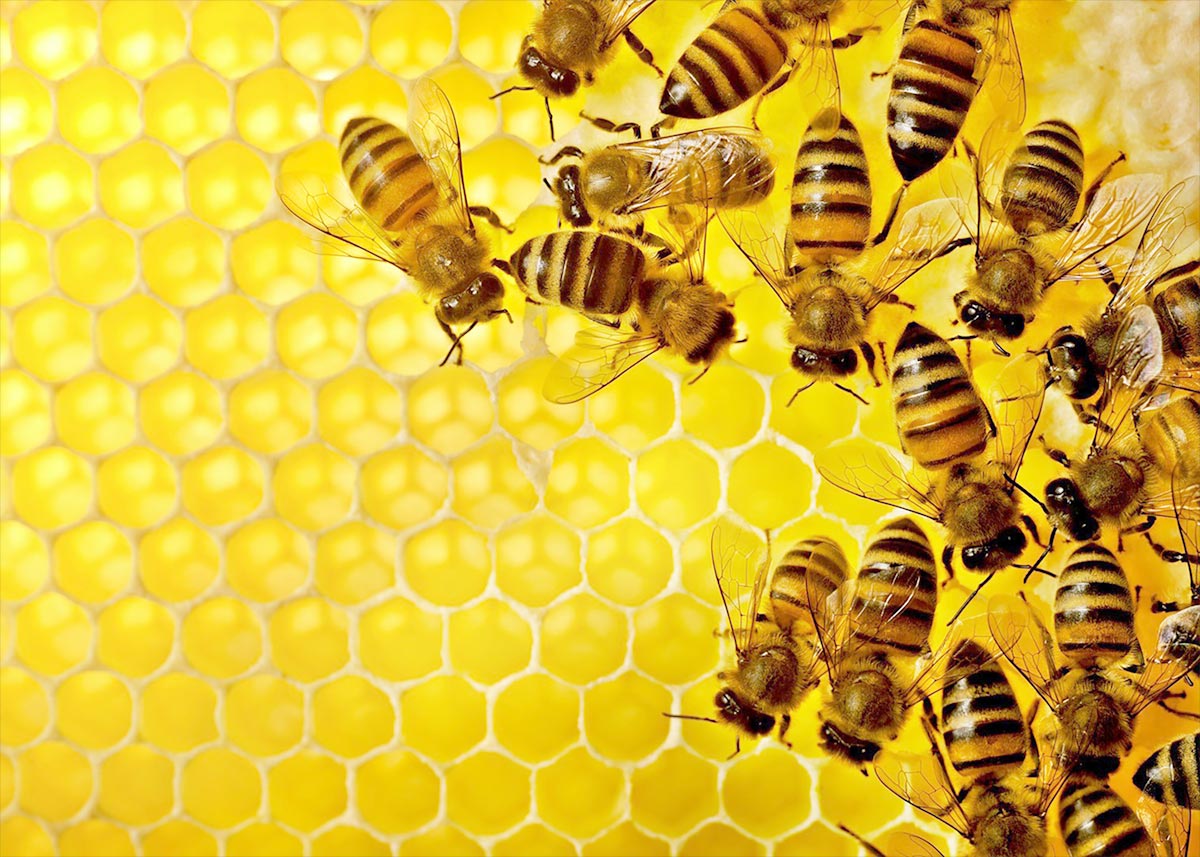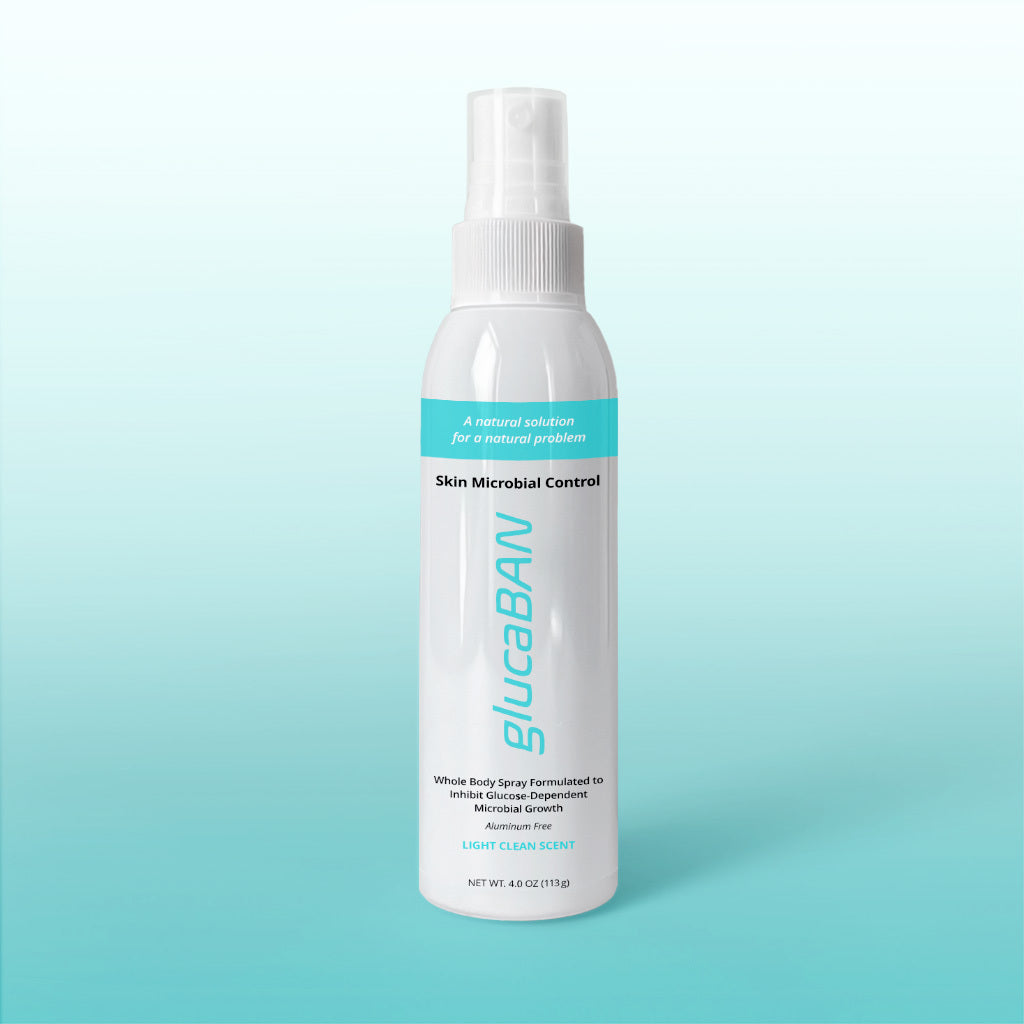
The Science

As Usual, Nature Thought of It First.
Honey bees (Apis mellifera) secrete glucose oxidase into honey to create an antimicrobial environment
Honey bees secrete glucose oxidase into honey to protect it from spoiling. This reaction is limited by the amount of oxygen present in the honey, which is sealed in the wax of the honeycomb. As a result only a small fraction of the glucose is consumed, but nearly all of the oxygen, creating hydrogen peroxide in the process and preventing most bacteria and molds from growing.
Without specialized techniques it is difficult to measure the fungi and bacteria that exist on the skin. However, the two most obvious consequences of their overgrowth are odor and itching, caused by bacteria and fungi (molds and yeasts), respectively. There is an increased risk of these undesired effects for individuals with diabetes, particularly if they have been prescribed SGLT2 inhibitors, which cause glucose to be excreted in the urine.
TheracosBio has developed glucaBAN, a skin microbial control product to inhibit these effects and maintain a natural healthy balance on the surface of the skin.
As in the bee hive, the glucose oxidase in glucaBAN turns oxygen from the air and glucose from the skin into gluconolactone and hydrogen peroxide. Most bacteria and fungi cannot grow on gluconolactone and as a result glucaBAN both removes an important nutrient and generates hydrogen peroxide, which helps protect the skin from undesirable microbial growth.
Hydrogen peroxide is the simplest peroxide, and is formed in nature when ozone from lightning reacts with rain in the air. It is also released in the defense responses of plants and animals to pathogens and can be found in toothpastes for whitening and skin care products that control acne. Benzoyl peroxide is another peroxide frequently used to combat acne that acts by a similar mechanism.
A second broad spectrum antimicrobial action of glucaBAN is based on EDTA (ethylenediaminetetraacetic acid), a compound used therapeutically to eliminate toxic heavy metals, like lead, mercury, or cadmium, from the body. In addition to binding poisonous metals, EDTA also binds iron, but is safe for therapeutic use because nearly all iron in the body is attached to protein in forms that are not available to EDTA. However with the exception of the bacteria that cause Lyme disease, every known living organism requires iron for growth. Bacteria and fungi cannot use iron bound to EDTA, so skin protected by glucaBAN becomes an iron desert in which microorganisms struggle to thrive.
The other ingredients in glucaBAN are sodium bicarbonate, added to bring the pH to between 6 and 7, and disodium cocoylglutamate, a surfactant made by fusing two natural products, fatty acids from coconut oil, and glutamate, an amino acid. The cocoylglutamate allows glucaBAN to be spread evenly on the skin and penetrate pores that harbor bacteria.
Technical Information - For Professionals
glucaBAN is a personal hygiene product developed to mitigate the adverse effects of SGLT2 inhibitors. The most common side effect of inhibitor use is genital mycotic infection, whereas the most severe side effect is Fournier's gangrene, a necrotizing fasciitis of the perineum. Both types of adverse event are fostered by incidental contamination of the groin by glucose-rich urine.
It is widely acknowledged that the skin below the umbilicus is unavoidably contaminated with fecal microbiota. One potential approach, the use of antibiotics to reduce superficial microbial count, is unattractive due to the risk of selection of antibiotic-resistant strains. A strategy based on general microbiostatic principles that prevent the growth of bacteria and fungi is more appealing.
glucaBAN accomplishes this objective by a combination of agents that collectively deter microbial growth. The principal ingredients are gluconolactone, EDTA and glucose oxidase. Glucose oxidase catalyzes the oxidation of glucose by molecular oxygen in the presence of water, giving rise to gluconolactone and hydrogen peroxide. The latter is a competitive inhibitor of the enzyme action, but the former stabilizes the oxidase, preserving its activity at elevated temperatures.1
Gluconolactone cannot be used as a carbon source by most microorganisms and cannot be metabolized by humans, or metazoan organisms in general. Hence the enzymatic catabolism of glucose by glucaBAN has two salutary consequences: the destruction of the nutrient value of the glucose from urine, and the generation of hydrogen peroxide, which has an intrinsic antimicrobial action.
Glucose oxidase appears to have evolved independently in molds and some insects. In bees it acts to help preserve the sterility of honey by consuming oxygen and thereby creating an anaerobic environment. This does not deter anaerobes, of course, but the high osmolarity of honey provides a second barrier to proliferation.2
The oxidative action of in situ peroxide generation is similar in principle to one of the major mechanisms of microbial destruction by the myeloid components of the immune system, which engage microbial pathogens through pattern recognition receptors that trigger release of superoxide anion by a plasma membrane cytochrome P450 oxidase.3
A similar mechanism of action accounts for the use of benzoyl peroxide to combat acne.
The second broad spectrum antimicrobial action of glucaBAN is based on EDTA (ethylenediaminetetraacetic acid), a hexadentate chelator that binds avidly to transition metal divalent and trivalent cations such as iron and zinc, as well as alkaline earth divalent cations such as magnesium and calcium.4 Because iron is an essential mineral for all life (with the sole known exception of Borrelia burgdorferi), and because EDTA binds to iron with very high affinity, superficial EDTA creates a skin environment that is unsupportive of microbial growth.
In the absence of laboratory methods the dermal microbiome is hard to evaluate. However, the two most obvious consequences of microbial overgrowth are odor, due to the formation of a variety of secondary metabolites to which the human nose is sensitive, and itching, due to the induction of innate immune responses to fungal pattern molecules, such as β(1,3)-linked glucans.
glucaBAN is formulated as a body spray that provides broad microbial control for skin and skin structures. glucaBAN is effective on feet and underarms as well the groin and anecdotally has been used to replace topical imidazole antifungals for itch relief.
For the patient with diabetes, or undergoing SGLT2 inhibitor treatment, glucaBAN can be considered a lifestyle product that enhances freedom from odor and is formulated to address specific needs and risks of the patient with diabetes or undergoing SGLT2 inhibitor therapy.
1 The enzyme used, the glucose oxidase from Aspergillus niger, is also widely used for the detection of glucose in glucometers and related glucose sensors.
2 Nonetheless, honey is known to contain the spores of obligate anaerobes and the well-known caution against feeding infants honey is due to the presence of Clostridium botulinum.
3 The genetic loss of this enzyme results in the genetic disorder Chronic Granulomatous Disease, which is characterized by severe recurrent bacterial infections. The name reflects the widespread formation of granulomas by macrophages unable to restrain bacterial pathogens by oxidative means, inducing the defense of last resort, the walling off the infectious nidus in a granuloma, a syncytial structure formed by macrophage fusion.
4 The binding to magnesium and calcium is orders of magnitude less potent.

Microbial Control for Skin
Whole Body Spray Formulated to Inhibit Glucose-Dependent Microbial Growth

